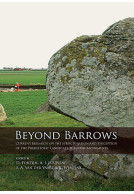Tomb 26 on Sai Island (Paperback)
A New Kingdom elite tomb and its relevance for Sai and beyond
Imprint: Sidestone Press
Pages: 380
Illustrations: 275fc/75bw
ISBN: 9789464260151
Published: 28th December 2021
Script Academic & Professional
Pages: 380
Illustrations: 275fc/75bw
ISBN: 9789464260151
Published: 28th December 2021
Script Academic & Professional
You'll be £75.00 closer to your next £10.00 credit when you purchase Tomb 26 on Sai Island. What's this?
+£4.99 UK Delivery or free UK delivery if order is over £40
(click here for international delivery rates)
Need a currency converter? Check XE.com for live rates
(click here for international delivery rates)
Need a currency converter? Check XE.com for live rates
New Kingdom burial customs in Nubia (northern Sudan) are well traceable by means of large cemeteries, in particular Egyptian style rock-cut shaft tombs with pyramidal superstructures. These tombs and their contents have lately been discussed as important data sets offering insights into the diverse population, material culture, funerary and social practices in New Kingdom Nubia.
A new rock-cut shaft tomb, potentially with pyramidal superstructure (Tomb 26), was discovered by the AcrossBorders project on Sai Island in 2015. This tomb yielded intact interments of officials connected with the Egyptian administration of colonial Nubia, buried together with family members and rich burial assemblages. Tomb 26 allows a close comparison with contemporaneous evidence from the nearby New Kingdom town of Sai, therefore providing a more complete picture of life and death in New Kingdom colonial Nubia. This book is the final publication of Tomb 26, its architecture and material culture, including chapters on geology, human remains, scientific analyses and a compilation of the material discovered. New information provided by AcrossBorders excavations of Tomb 26 contribute to recently discussed questions regarding cultural encounters and social practices in New Kingdom Nubia. Comparable material from other tombs on Sai and elsewhere in Nubia is discussed in order to stress the relevance of the new discovery.
The archaeological contextualisation of Tomb 26, in combination with scientific analyses like strontium isotope analysis, offers fresh information on the complex coexistence of various cultural groups on Sai with slightly different approaches to their cultural and social affinities during the New Kingdom. Overall, Tomb 26 and its associated finds are of prime significance for understanding lived experience on New Kingdom Sai and more broadly in New Kingdom Nubia.
Other titles in Sidestone Press...















